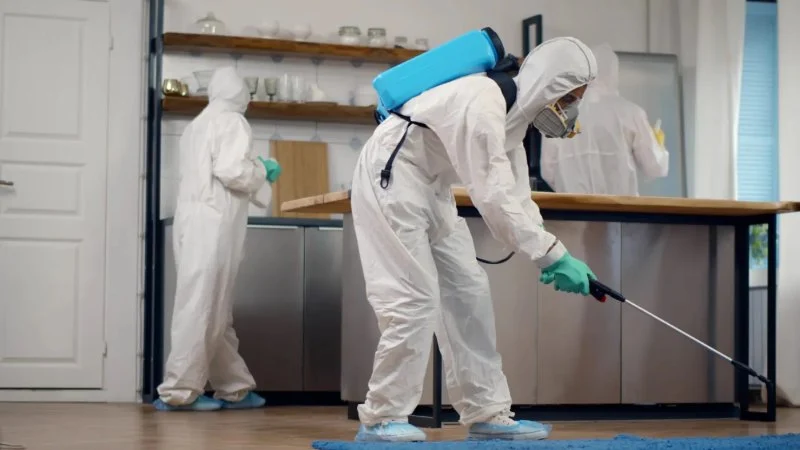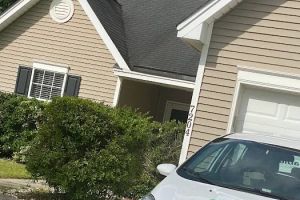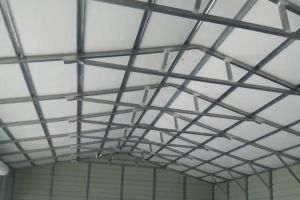
- 1. What to Expect During a Pest Control Visit
- 2. Initial Pest Inspection Process
- 3. Pest Control Treatment Methods
- 4. Follow-Up Pest Control Services
- 5. How to Prepare for a Pest Control Visit
- 6. When to Call Professional Pest Control
- 7. Why Choose PestControlHub for Your Pest Control Needs
1. What to Expect During a Pest Control Visit
When you schedule a professional pest control visit, it’s important to understand the process so that you can be prepared and know what to expect. A professional pest control visit typically involves a thorough inspection of your property, followed by targeted treatment to eliminate any pests or prevent future infestations. Here’s a breakdown of the typical steps involved:
1.1 Arrival and Initial Assessment
The pest control technician will arrive at your property and begin by discussing any signs of pest activity you have observed, such as sightings or damage. They may ask questions about the type of pests you’ve noticed and the history of pest problems in your area. This initial conversation helps them understand the scope of the issue and develop a customized plan.
1.2 Inspection of the Property
The technician will perform a thorough inspection of your home or business, both inside and out. This includes checking for visible signs of pests in areas like kitchens, basements, attics, and crawl spaces. They will also look for potential entry points, such as cracks in the foundation, gaps in window screens, or holes around doors.
2. Initial Pest Inspection Process
The inspection is a critical part of any pest control service, as it allows the technician to determine the type of pests present, the extent of the infestation, and any environmental conditions that may contribute to pest problems. Here’s what you can expect during the inspection process:
2.1 Identifying Signs of Infestation
During the inspection, the technician will look for visible signs of pest activity, such as droppings, nests, or chewed materials. They may also use tools like flashlights, mirrors, and cameras to inspect hard-to-reach areas. Identifying these signs helps the technician determine which treatment methods are most effective.
2.2 Assessing Environmental Conditions
Pest control experts will also evaluate the conditions around your property. For example, areas with standing water, overgrown vegetation, or improperly stored food can attract pests. The technician may recommend changes to your environment to make it less inviting to pests.
3. Pest Control Treatment Methods
Once the inspection is complete, the pest control technician will recommend the appropriate treatment methods based on the findings. Treatment methods can vary depending on the type of pests and the severity of the infestation. Here are some common pest control methods used during a professional visit:
3.1 Chemical Treatments
For more severe infestations, pest control professionals may apply chemical treatments such as insecticides, rodenticides, or other pest-specific products. These chemicals are applied to targeted areas where pests are active or likely to enter. Professionals take great care to ensure that treatments are safe for your family and pets.
3.2 Non-Chemical Treatments
Non-chemical treatments include techniques like heat treatment, traps, and exclusion methods. Heat treatment involves raising the temperature in an infested area to kill pests, while traps can be used to capture rodents. Exclusion involves sealing entry points to prevent pests from re-entering the property.
3.3 Integrated Pest Management (IPM)
Integrated Pest Management (IPM) is an eco-friendly approach that combines multiple methods, including habitat modification, biological control, and chemical treatments as a last resort. IPM focuses on prevention and uses the least harmful methods to control pest populations.
4. Follow-Up Pest Control Services
After the initial treatment, follow-up visits may be necessary to ensure that the pest issue has been fully addressed and to prevent future infestations. Follow-up services often include reapplication of treatments, monitoring traps, and additional inspections to ensure that pests have been eradicated.
The frequency of follow-up visits depends on the type of pests involved and the severity of the infestation. Some pests, like termites, may require several visits, while others, like ants, may only need a single follow-up treatment.
5. How to Prepare for a Pest Control Visit
Preparing for a professional pest control visit can help ensure that the treatment is effective and that your home or business is as safe as possible during the process. Here are a few simple steps to follow before the technician arrives:
5.1 Clear Clutter
Clear any clutter in areas that may be treated, such as basements, attics, or closets. This will allow the technician to access all areas that need to be treated and ensure that the treatment is applied thoroughly.
5.2 Inform the Technician About Pest Issues
Before the visit, provide the technician with any relevant information about the pests you’ve observed, such as where you’ve seen them or what damage they’ve caused. The more information you provide, the more accurately the technician can address the problem.
5.3 Secure Pets and Children
It’s important to keep pets and children out of treated areas for the duration of the treatment and until it’s safe to return. The technician will provide guidelines on how long to wait before reentering the treated areas.
6. When to Call Professional Pest Control
There are times when DIY pest control methods simply aren’t enough, and calling a professional is the best option. Here are some signs it’s time to schedule a professional pest control visit:
6.1 Persistent Pest Problems
If you’ve tried DIY treatments and the pests keep returning, it may be time to call in the experts. Professional pest control services have the tools, knowledge, and experience to handle even the most stubborn infestations.
6.2 Large-Scale Infestation
For larger infestations, such as a rodent or termite problem, it’s essential to have a professional assess the situation. These pests can cause significant damage if left untreated, and professional help ensures effective elimination.
7. Why Choose PestControlHub for Your Pest Control Needs
At PestControlHub, we provide top-quality pest control services that are tailored to meet your specific needs. Our team of licensed professionals is equipped with the latest tools and techniques to eliminate pests safely and effectively. Whether you're dealing with a minor infestation or a major pest problem, we offer reliable solutions to protect your home and business.
Visit our website to learn more about our pest control services and schedule an appointment with our expert team today.









 Wildlife Resolutions4.0 (443 reviews)
Wildlife Resolutions4.0 (443 reviews) Pest Marshals of Toledo5.0 (2 reviews)
Pest Marshals of Toledo5.0 (2 reviews) LS Rodent Proofing & Pest Control Service5.0 (4 reviews)
LS Rodent Proofing & Pest Control Service5.0 (4 reviews) Best Termite & Pest Control4.0 (16 reviews)
Best Termite & Pest Control4.0 (16 reviews) Varment Guard Wildlife Services5.0 (28 reviews)
Varment Guard Wildlife Services5.0 (28 reviews) Pestban Inc4.0 (394 reviews)
Pestban Inc4.0 (394 reviews) How to Use Monitors to Detect Pest Entry: A Comprehensive Guide
How to Use Monitors to Detect Pest Entry: A Comprehensive Guide How to Predict Which Pests Will Invade Next – Smart Pest Forecasting for the U.S.
How to Predict Which Pests Will Invade Next – Smart Pest Forecasting for the U.S. How to Conduct a Pest Risk Assessment at Home – Expert Guide
How to Conduct a Pest Risk Assessment at Home – Expert Guide How to Block Pest Entry Around Deck Joists: Effective Solutions
How to Block Pest Entry Around Deck Joists: Effective Solutions How to Safely Use Fumigation Methods: A Comprehensive Guide for Homeowners
How to Safely Use Fumigation Methods: A Comprehensive Guide for Homeowners Why Pests Are More Active After Rain: Understanding the Link Between Weather and Pest Behavior
Why Pests Are More Active After Rain: Understanding the Link Between Weather and Pest Behavior